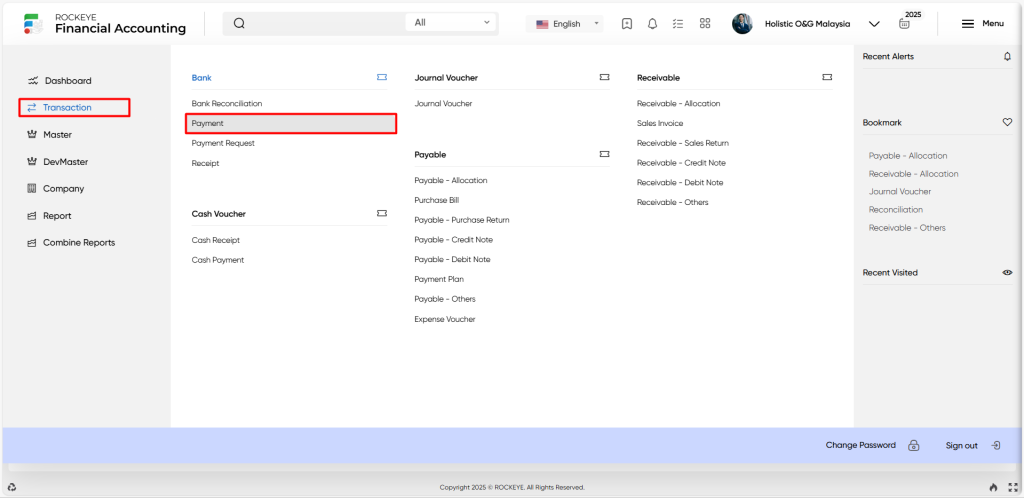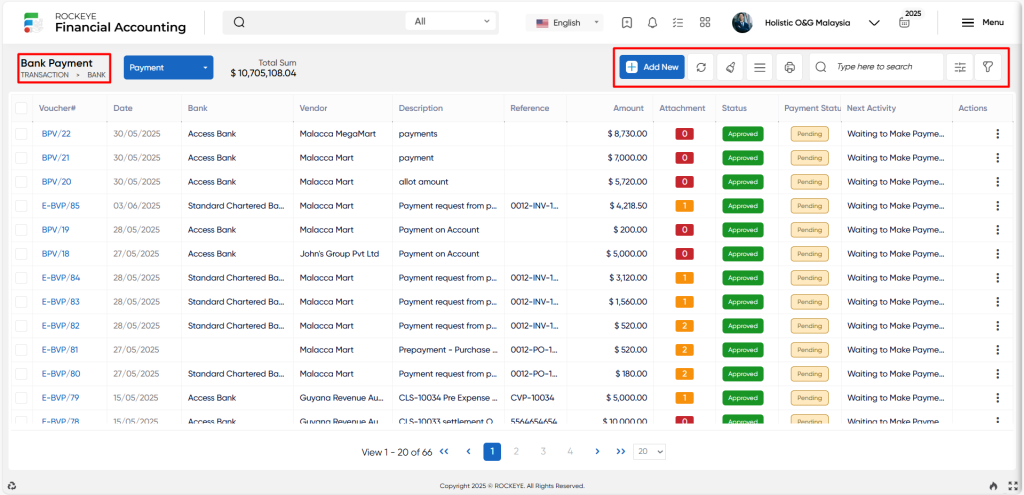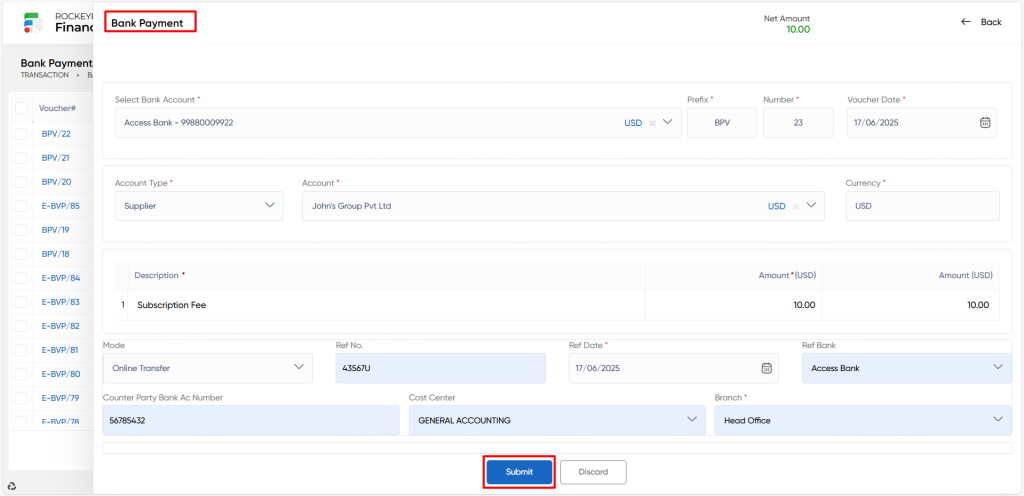Financial Accounting
Bank Payment
Introduction/Purpose:
A bank payment serves as a transaction record and provides detailed information about a payment made from a bank account. It ensures proper documentation and accountability by adding critical information such as payment amount, bank account, dates, and reference numbers, among other things.
Dependency:
- Integration with Bank Accounts: The financial management system must be integrated with the organisation’s bank accounts in order to generate accurate bank payment vouchers. This interface allows you to access bank account details such as account numbers and current balances for use in producing the voucher.
- Cost centre: Integration of cost centres is required to create bank payment vouchers in the financial management system. Bank payment vouchers are directly tied to organisational expenses, and by integrating cost centres, the system may properly allocate and track expenses to specific departments or projects, allowing for improved financial analysis and management.
How To Navigate To Bank Payment:
The navigation includes the following steps for viewing the bank payment in the financial management system.

- Click on the transactions tab: The transactions can be accessed by clicking on the transactions tab on the side menu.
- Click on the bank payment: The bank payment can be accessed by clicking it from the bank section.
Listing:
A bank payment listing in a financial management system is a feature that provides a list of all bank payment vouchers.

- Users can view the following information on the bank payment voucher listing page
- Voucher and Date
- Bank name type and account/contact
- Currency and exchange rate
- Amount & amount(lc)
- Attachments
- Reconciled
- Allocated and status
User can perform the following actions
- Add new: The “Add new” function allows you to create and add a new bank payment voucher to the system.
- Show all listing: The “Show all listing” function is to display and update a list or collection of areas within a system or interface.
- Clear Cache: The “Clear cache” function refers to the process of deleting temporary files, data, or stored information that is stored in a cache.
- More Options: The “More options” function provides the user with more actions or functionalities.
- Print Records: The “Print Records” feature allows users to print content by opening a print dialogue or displaying a preview of the content to be printed.
- Search: The “Search” function allows the user to look for a specific entry within the available data and presents the results that match the search parameters.
- Quick Search: The” Quick Search” function allows users to quickly search and locate specific bank payments within the system.
Recording & Update:
Add New Bank Payment:

- Bank account: The “Bank account” refers to assuring accurate deduction, and the financial management system allows the user to choose the appropriate bank account to reflect the organisation’s cash flow.
- Prefix & Number: The “Prefix and number” in the bank payment voucher refers to the in the bank payment voucher identifying the category or kind of payment voucher, and the number is used to rapidly identify specific payment vouchers.
- Voucher date: The “Voucher date” refers to the date the voucher is created in a bank payment voucher.
- Account type: The “Account type” refers to the type of bank account used in the payment, such as supplier or customer.
- Account: The “Account” refers to the bank account from which the payment is made. You must select the proper account from a list of options or enter the account information.
- Currency: The “Currency” refers to the currency used to make the bank payment. Depending on the transaction, it could be local currency or any other international currency.
- Exchange date: The “Exchange date” refers to the date on which the exchange rate is used to convert the payment amount into the target currency if the payment includes a foreign currency exchange.
- Exchange rate: The “Exchange rate” refers to the rate at which one currency is exchanged for another.
- Narration: The “Narration” refers to the area wherein a quick overview or explanation of the bank payment transaction is provided. It helps in providing additional information or context for the payment.
- Amount: The “Amount” refers to the field where the user can enter the payment amount and specify the transaction’s numerical value.
- Mode: The “Mode” refers to the method or channel by which the payment is made, such as a cheque, cash, or any other payment mode enabled by the financial management system.
- Ref no: The “Reference no” refers to a commonly used term to record a unique reference number associated with the payment, such as an invoice number or a specific identity provided by the beneficiary.
- Ref date: The “Reference date” refers to a date connected with the reference number specified above.
- Ref bank: The “Reference bank” refers to the bank details or the name of the beneficiary or recipient of the payment.
- Cost centre: The “Cost centre” refers to a specific division, department, or project within an organisation to which the bank payment is allocated or attributed.
- Remarks: The “Remarks” refers to a field that allows users to insert any relevant notes or comments concerning the bank payment.
- Attachments: The “Attachment” refers to a field where the user can upload supporting papers or files linked to the bank payment, such as invoices, receipts, or any other necessary paperwork.
Users can perform the following actions
- Submit: The “Submit” function allows the user to submit the required information while creating a new bank payment voucher.
- Discard: The “Discard” function allows the user to cancel the submission of information provided at the time of creating a new bank payment voucher.